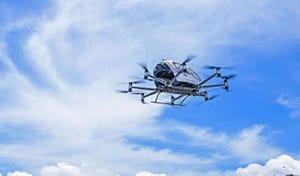Robotic Sensors Could Improve Touch Sensitivity of Prosthetics
The project led by the University of West Scotland could be a potential game changer in the world of prosthetics and robotic limbs

A new research project is looking to develop advanced sensors for robotic systems, using haptic feedback and high-accuracy pressure sensors to improve dexterity and motor skills, and make prosthetic limbs more akin to their biological counterparts.
The project is led by the University of the West of Scotland (UWS), Integrated Graphene and supported by the Scottish Research Partnership in Engineering (SRPe) and National Manufacturing Institute for Scotland (NMIS) Industry Doctorate Programme in Advanced Manufacturing.
Pressure sensors bring an important capability to wearable robotics, giving the electronics heightened tactile sensitivity and, by proxy, more human-like motor skills.
Currently, a lack of sensory capabilities proves a hindrance to robotic prosthetics, often preventing the systems from completing a task.
“For robots to reach their full potential,” said Professor Des Gibson, project principal investigator, “accurate pressure sensors, capable of providing greater tactile ability, are required.”
The team hopes to meet this need through the new collaborative project, adapting 3D graphene foam, dubbed Gii, for the sensor design. This material changes its electric resistance depending on the pressure it is put under – allowing it to determine the difference between light and heavy loads and mimic the “sensitivity and feedback” of human touch.
As well as prosthetics, the team says its novel design has potential use cases in everything from surgery to precision manufacturing.
“We know the unique property of Gii makes it suitable for use in other applications like disease diagnostics and energy storage,” said Marco Caffio, co-founder and Chief Scientific Officer at Integrated Graphene, “so we’re always very excited to be able to demonstrate its flexibility in projects like this one.”
The team is intending to further develop its system’s sensitivity before widespread roll out. The next phase of the project will continue to be funded by UWS, Integrated Graphene Ltd, SRPe and NMIS.
About the Author
You May Also Like








